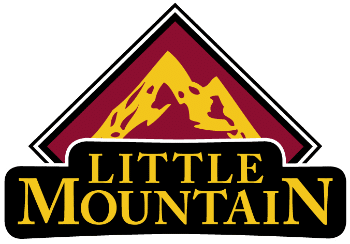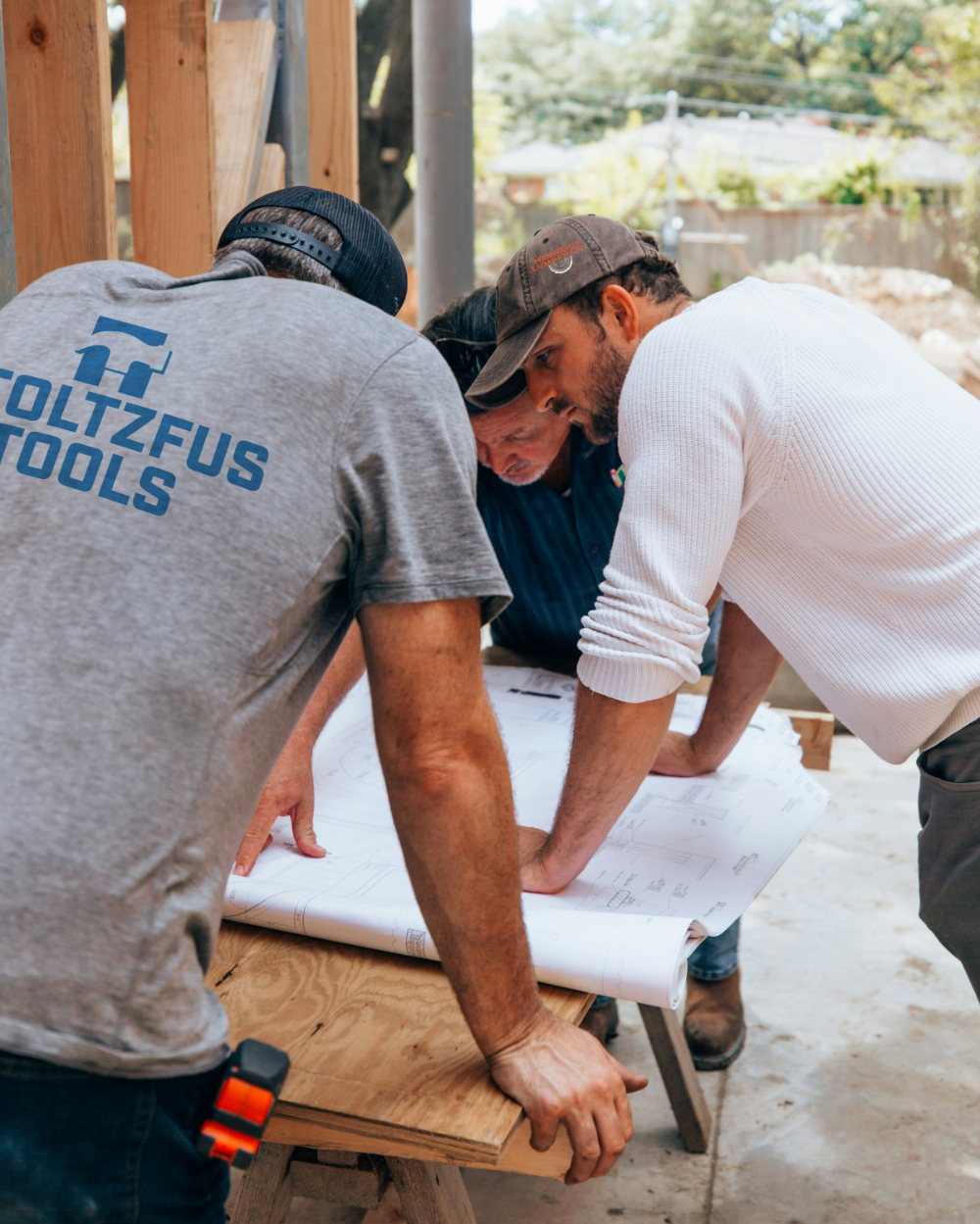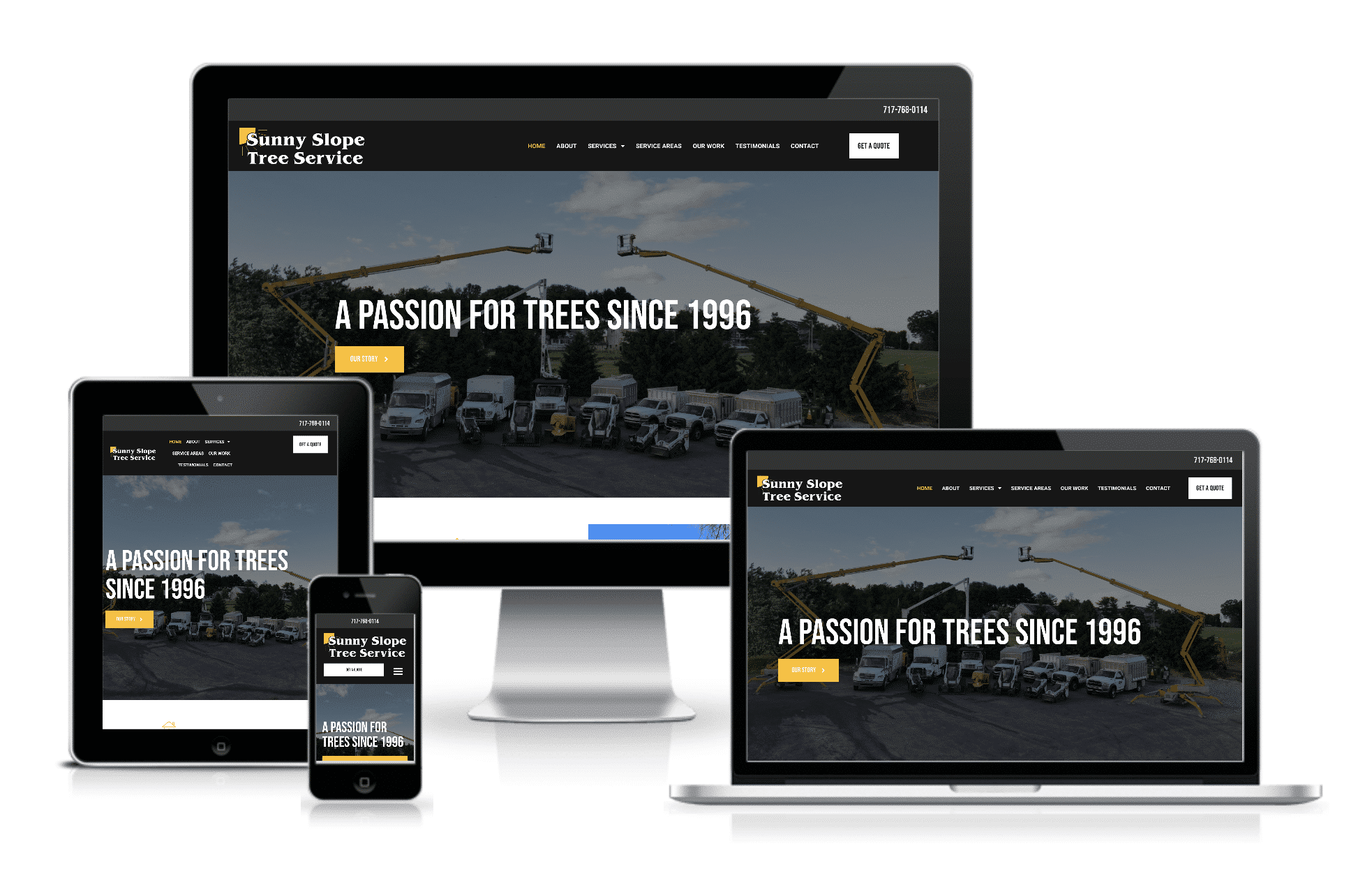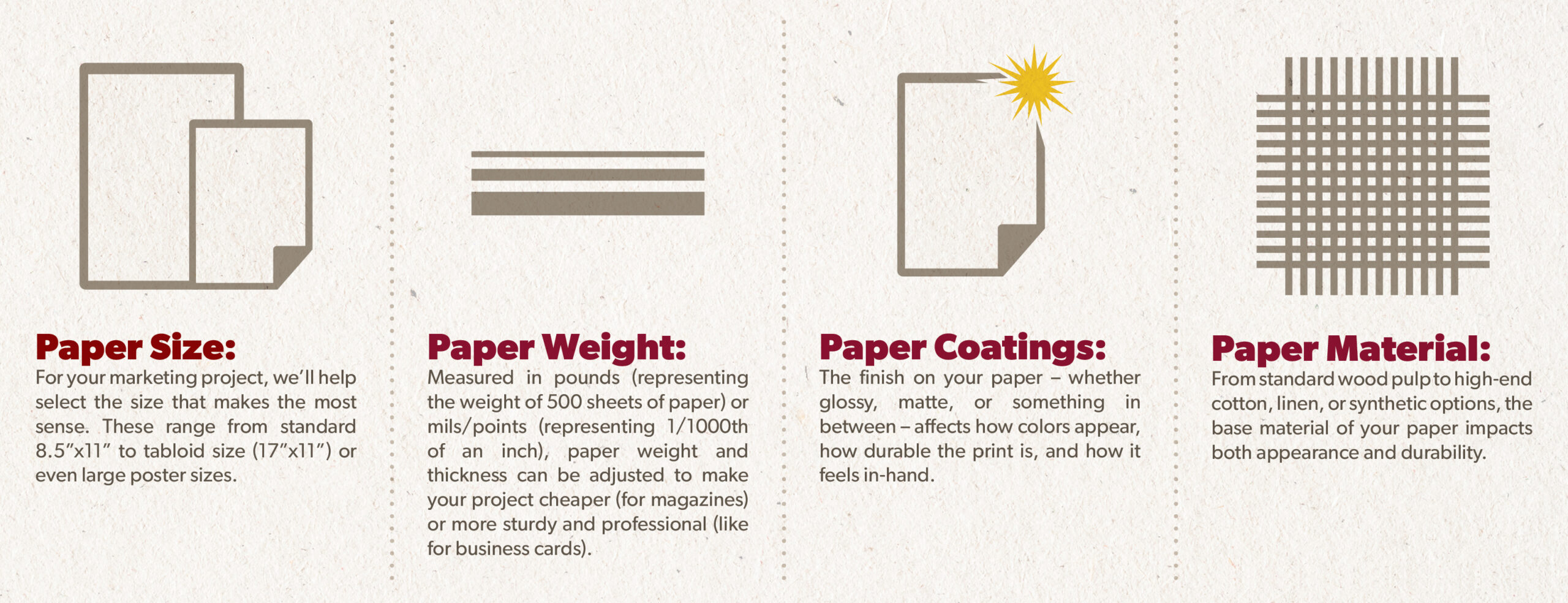In this digital age, you might be wondering if flyers and brochures still have a place in our fast-paced marketing world?
The answer is a resounding yes, and deploying an effective brochure can make a significant impact on your business. This guide to brochure printing and design covers everything you need to know for first-timers: why brochures still matter, types of brochures, essential design elements, and your many printing options.
The important thing is: if you’re looking for a new brochure printer near you, we’ve got you covered. Little Mountain Printing is a comprehensive design-print company in Lebanon County, PA, serving Central Pennsylvania and virtually all of the U.S.! If you have questions or are ready to learn more, just give us a call.
Key Takeaways
- Brochures are still effective marketing tools, offering a tangible connection to your brand that digital ads simply can’t match.
- Choosing the right type, size, and fold style of a brochure is helpful in effectively communicating your message and engaging your audience.
- Essential design elements include great content, high-quality images, and a clear call to action that will drive reader engagement and action – like a call to your business.
Why Brochures Still Matter

Despite the rise of digital media, brochures retain their charm and effectiveness in marketing. A brochure is more than just a piece of paper; it’s a tangible connection between your business and your customers.
Unlike digital ads that can be easily ignored or forgotten, brochures offer a physical reminder of your brand and services. They’re especially useful at trade shows, events, or even in your office, where potential customers can take home a piece of your business to review at their leisure.
And, brochures are versatile! In the healthcare sector, for instance, brochures educate patients about services, procedures, and health tips. Real estate agents rely heavily on brochures to showcase property listings, highlighting the key features and selling points of homes. Little Mountain Printing, a specialist in brochure printing services, understands the importance of well-crafted brochures in just about any scenario.
Types of Brochures and When to Use Them

What comes to mind when you hear the term “brochure?” Let’s muddy the waters with some of the most common:
- Company brochures
- Sales brochures
- Spec sheets
- Event brochures
- Menus
- Mailers
Knowing which type to use when can make all the difference in your marketing efforts.
Tri-fold brochures are a popular choice for company brochures because they are compact yet spacious enough to include detailed information, perfect for providing an overview of your company at trade shows or in your store.
Sales brochures, on the other hand, often use Z-Fold or double parallel fold styles, making them easy to stack and distribute, ideal for highlighting promotions or new products to potential customers.
Event brochures and menus also have their own common formats. For instance, no-fold brochures can be sufficient for simple events, while a Z-Fold offers a more elegant option for detailed information. Menus, especially for takeout, benefit from the trifold format as it allows for a clear and organized presentation of different dishes.
Brochure mailers are another effective tool, acting as a direct connection to your potential customers. Creative fold styles can help your mailers stand out in a crowded market.
Essential Design Elements of a Successful Brochure
Creating a successful brochure involves more than just putting text and images on paper. It’s about crafting a piece that resonates with your audience and compels them to take action with your business.
Essential design elements include:
compelling content, high-quality images, and clear calls to action, each playing a role in making sure your brochure helps to engage AND convert readers.
Creating Content and Copy That Resonates
The foundation of any successful brochure is its content. A catchy headline is crucial as it grabs the reader’s attention and sets the tone for what follows. Think of it as the hook that draws readers in. Once you have their attention, the body copy must be clear, concise, and error-free. Spelling and grammatical mistakes can significantly undermine the credibility of your brochure, so a thorough review before printing is critical.
Remember, your content should tell a story that resonates with your audience. Whether you’re in real estate, healthcare, or retail, your brochure should create an emotional connection with your readers. Use language that speaks directly to them and addresses their needs and interests. This approach makes your brochure more than just an informational piece; it becomes a tool for building relationships and driving engagement.
Choosing Effective Images
High-resolution, high-quality images enhance the visual appeal and make a strong impression on your audience. Low-quality visuals can detract from your brochure, so it’s crucial to use images that are at least 300 PPI to ensure they print clearly without pixelation.
Our team can help with this as we provide professional photography services and in-house graphic design.
Your images should connect emotionally with your target audience. For example, avoiding clichéd stock photos and opting for more authentic images can help your brochure stand out. Free stock photo websites can be a decent resource, but be selective to make sure the images reflect your brand’s unique identity.
Whether it’s photos of happy customers, vibrant product shots, or engaging lifestyle images, the right visuals will make your brochure more appealing and effective.
Adding Effective Calls to Action
A call to action (CTA) is a crucial element of any brochure. It serves to motivate the reader to take the next step, such as making a purchase or seeking more information. Clear and persuasive wording can enhance the likelihood of reader engagement.
For instance, action verbs like “discover,” “explore,” or “join” can encourage readers to act.
The design and placement of CTAs are equally important. Using contrasting colors and bold fonts can make CTAs stand out. Positioning them prominently within the brochure makes them easily visible and accessible. A/B testing different CTAs can also help optimize their effectiveness.
Urgency in CTAs can drive immediate response, too. Phrases like “limited-time offer” or “only a few spots left” create a sense of urgency that can prompt readers to act quickly. Additionally, offering incentives such as discounts or free trials can increase the likelihood of readers following through. Highlighting the benefits of taking action, rather than just the features, can be more persuasive and drive better results.
Choosing the Right Printing Options

Here’s where we shine.
Selecting the right printing options is critical for producing a professional brochure, involving choosing the appropriate size, paper stock, and fold style. Each of these elements can significantly impact the final product’s visual appeal and functionality, especially when considering custom brochure printing for a print ready file.
Finding The Perfect Size
The size of your brochure plays a role in its presentation and usability. 8.5” x 11” is the most commonly used due to its versatility and compatibility with standard printing equipment. This size allows for various fold styles, making it suitable for almost all marketing needs. It can be easily folded into multiple configurations, such as trifold or half-fold, fitting neatly into an envelope for mailing.
Whether you opt for the standard 8.5” x 11” or explore other sizes like legal (8.5” x 14”) or tabloid (11” x 17”), the key is to match the size with your specific needs and the expectations of your audience.
Common brochure sizes include:
- 8.5” x 11” (Standard Letter Size)
- 11” x 17” (Tabloid Size)
- 8.5” x 14” (Legal Size)
- 5.5” x 8.5” (Half-Letter Size)
- 4” x 9” (Rack Card Size)
- and more!

Selecting Paper Stock
The quality of paper stock you choose for your brochure will impact durability and overall appeal. Coated papers, for instance, enhance print quality by providing sharper images and even more vibrant colors compared to uncoated papers. Matte paper stocks offer a non-shiny finish that resists fingerprints and offer a sophisticated look.
Budget-friendly paper options can still provide quality results, particularly for larger print runs where cost efficiency is essential. Ultimately, selecting the right paper stock involves balancing quality, cost, and environmental impact to achieve the best results for your specific project.
Exploring Fold Styles

The fold style of your brochure not only affects its appearance but also how the information is organized and presented!
The tried-and-true trifold brochure is a popular choice, often printed on 8.5” x 11” paper, offering multiple panels for detailed information while remaining compact. This format is great for comprehensive overviews or detailed descriptions of services and products.
Other fold styles like the half-fold and Z-fold offer their own advantages. A half-fold brochure, created by folding an 8.5” x 11” page in half, is straightforward and easy to navigate. The Z-fold, where one outer panel folds to the front and the other to the back, allows for a more dynamic layout.
Choosing the right fold style depends on the amount of information you need to present and how you want to guide the reader through your content.
Common Brochure Mistakes and How to Avoid Them
Designing and printing a brochure involves several potential pitfalls.
One common mistake is overloading the brochure with excessive text, making it appear cluttered and difficult to read. Using concise language and incorporating white space is great for clarity.
Inconsistent use of colors, fonts, and imagery can also confuse readers and detract from the professional look of your brochure.
Using low-quality or irrelevant images can damage your credibility. Always opt for high-resolution, relevant visuals that align with your brand.
Another frequent error is the lack of a clear call to action! Without a specific, compelling, and prominently placed CTA, you risk missing out on valuable opportunities to engage your audience.
Maintaining a consistent layout is crucial for visual flow and organization, too. Employing a grid system can help achieve this consistency, ensuring your brochure looks cohesive and professional.
Ready to Elevate Your Brochure Game?

Are you ready to take your brochure game to the next level? We’re here to help.
Remember, a well-designed brochure is not just a marketing tool; it’s a powerful and cost-effective way to connect with your audience and drive engagement.







